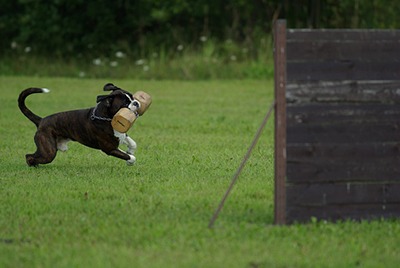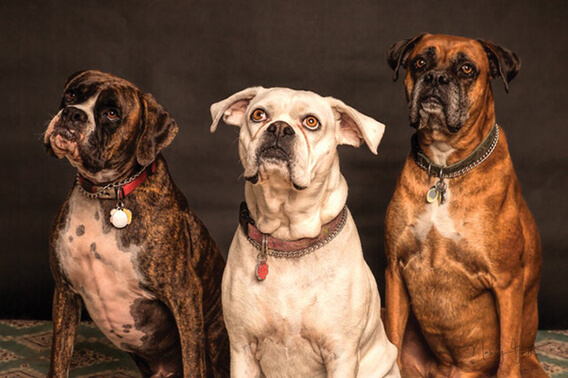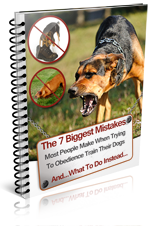
Secrets to Dog Training - Dog Training
See what the world's most popular Dog Training Guide can do for your Dog.
The type of dog training equipment you will need will depend slightly on the training method you undertake. But in general, even though most people think a collar is just a collar and a lead is just a lead (or a rope, belt, or shoelace as it may be), this is not always the case. By taking a bit of time to find the right products for even the most common of dog training tasks, you are likely maximizing your dog's comfort while minimizing the amount of money you shell out over time for poor quality products.
Dog collar and lead
For puppies, it is best to use a soft woven collar with a buckle attachment. The collar should fit around the neck with enough room to comfortably slide two fingers between the dog's neck and the collar. If it is any tighter it can cause discomfort, and if it is looser it can allow the dog to "slip" the collar. Get the puppy used to wearing a collar gradually. If you have problems with the puppy accepting the collar, initiate a training regime whereby they can associate something positive (such as a treat) with the experience of wearing it. It's best not leave collars on young puppies if they unsupervised.
Once the puppy is a bit older a nylon collar and leash or lead will work well. Many owners opt for a retractable leash as this allows more freedom for the dog when possible. The leash can be shortened in high traffic locations. A regular nylon lead works just as well and may be easier to train with than a retractable lead.
A "check" collar should never be used for puppies, and should only be considered as a training method for dogs that pull or exhibit dominance issues as they get older. But before you go out and buy a check collar, you should give some serious consideration to head harnesses, such as the Gentle Leader. These harnesses have a nylon nose strap and neck strap. The lead attaches to a ring at the end of short strap that goes under the chin. A head harness is designed to control the head of the dog, the animal's center of balance of locomotion, and in turn allows you to control the movement of the animal. Some people mistake it for a muzzle, but it is not a muzzle and - aside from possible initial objections by you dog - it is much more humane than a check collar. In many cases it is possible to use a head harness as a training tool and then no longer require anything other than a conventional lead after the dog has grown accustomed to your expectations, and your control.
Dog grooming supplies
Part of training your dog should be teaching them to be groomed and handled. You should have a soft slicker type brush and a metal comb at the minimum. It will be much more convenient for you and less expensive if you can get trim your dog's nails on your own. It is possible to get detailed instructions from your vet for trimming nails, but the most important thing to be aware of is never cut below the "quick," which is the part of the nail that where the nerve begins. You will be able to clearly see the part of the nail that houses the quick when looking at the nail from the bottom, as the texture markedly changes. A good set of purpose dog nail clippers is essential. These have a guard that directs the depth of the cut and can keep you safely away from the quick. Never use human clippers.
Crate training
Most trainers and breeders now recommend crate training for dogs that are to be kept indoors. The crate should be large enough for the puppy or dog to enter and to rest in. The breeder or a pet store chart should indicate what size is best for your breed of dog. Crate training is idea for house training your puppy or dog, and will also provide a space of his or her own for the dog. The crate is not and should never be used as punishment area. Because they evolved as "den" animals, they associate the crate as a place of security and even privacy (dogs like their own private time too!). In other words, dogs have a much different understanding of confinement than we do, so they come to view the crate in a very positive way.
Treats and Toys
One of the essential elements of training is a good dog treat. Avoid using sweet or human treats (NO chocolate!), and instead go with small kibble or rawhide chews. In addition, you are doing your dog a favor if you can give them a taste for milk bone, rawhide, or any form of "dental" chew that works on cleaning their teeth as they are being actively rewarded. It's win-win that way. If you are ambitious enough you can even make your own treats at home, and you will find loads of healthy dog treat recipes available for free on the Web.
With regard to toys for your dog, it is helpful not to see "play" time as separate from "training" time. Every moment you spend with your dog you are in a constant feedback loop, communicating to each other, and training each other as well. Find which toys motivate your dog and using them as training aids. If your dog tends to destroy toys, then keep some toys that are expendable around that he can mutilate when you are away, and save the nicer toys for when you want to play fetch with a ball that has no holes in it and still bounces. With regard to treats and toys, one tip is that often the treats you find in the supermarket are just as good and just as attractive to your pet, and they come at a much better cost.


